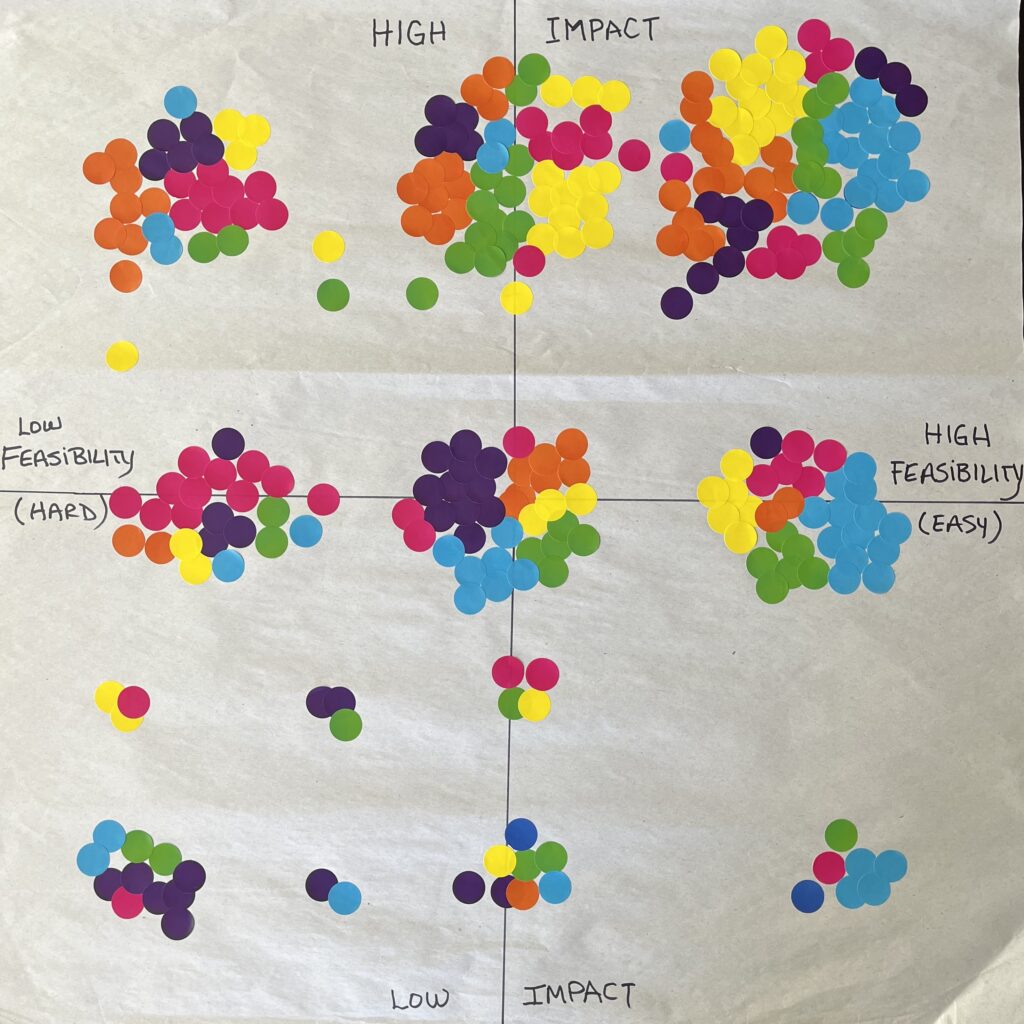“Does your postsale strategy set up customers for success?” was the question we asked the 47 people who attended our workshop during Forrester’s B2B Summit earlier this month. After completing a survey to score their organizations on 16 questions about postsale strategy, we asked everyone to share how raising scores in any of the six categories might impact their business. Working in teams of six to eight, workshop participants placed Post-It notes for each category on flip charts to rate the expected business and customer impact against how feasible it would be to raise a score.

The photograph here summarizes the “impact” versus “feasibility” ratings across all the teams that completed this exercise. The colored stickers correspond to the following six categories from our assessment tool:
-
-
- Team purpose/charter = Blue
- Strategic alignment to business goals and other teams = Yellow
- Performance metrics = Green
- Technology and data readiness = Hot pink
- Customer lifecycle management = Orange
- Budget/funding model and capacity planning = Purple
-
While not analytically rigorous (e.g., many of the stickers should appear directly on top of each other if reflecting the exact ratings from the Post-It notes exercise), the patterns reveal several interesting findings:
- A solid postsale strategy can have a meaningful impact. Attendees represented a wide range of roles and many did not hold direct postsale responsibilities, but the number of stickers placed between the middle and the top of the chart led many to observe that postsale programs can have a positive impact on customers and business outcomes alike.
- Defining your charter or purpose is relatively easy — so get it done. Many blue stickers along the right edge show that this is so. Top charters seek to help customers achieve their goals through proactive and empathetic experiences with postsale teams focused on driving and protecting retention, growth, and advocacy.
- Ditto for performance metrics that demonstrate outcomes and value. Quite a few green stickers show up in the upper-right quadrant, showing that attendees feel it is important — and relatively easy — to assess the impact of postsale programs on business success and customer outcomes. (Doing it consistently, however, is a different matter!)
- Aligning strategically and managing lifecycles rigorously can have a big impact on both customers and the business. Many orange (lifecycle) and yellow (alignment) stickers populate the high-impact/high-feasibility area. Interestingly, quite a few attendees could have scored higher on these two assessment categories. While impactful and feasible, these two practices don’t get nearly enough attention today.
- While impactful, investing in technology and managing data is hard. At the end of the exercises, we asked attendees to reflect on what they learned. Almost unanimously, participants commented on the challenges they face with technology implementation, data access, and data management, yet they see these areas as foundational to creating and supporting postsale programs that deliver value.
- Making the business case to fund postsale activity is less of a challenge. A pocket of purple stickers in the middle tells us that while having the right funding model and business case is important, participants feel that other areas, such as alignment and lifecycle management, potentially have more impact.
- Some are cynical about whether what you say you will do (charters) and how you fund it (business justification) have enough impact. A smattering of blue (purpose) and purple (budget) stickers across the bottom puzzled us a bit. Post-exercise discussion revealed a somewhat pessimistic view that current market and business conditions make it difficult to adjust resources, decreasing feasibility. And without change here, the resulting impact will remain low.
Keep in mind that individual company scores are not reflected on this chart. It is possible, for example, to rate a category as high on impact and feasibility but to achieve a low score for it. Good news: This situation represents an ideal opportunity for improvement with relatively less effort!
If you’d like to explore your postsale strategy further, please feel free to take our online assessment (no company or personally identifiable information will be shared, although we collect some to understand the demo- and firmographics of respondents). Upon completion, everyone will see how their scores compare to the average of scores collected to date. Forrester clients are welcome to schedule a discussion with Shari Srebnick or myself to discuss how to improve your results in any category.
